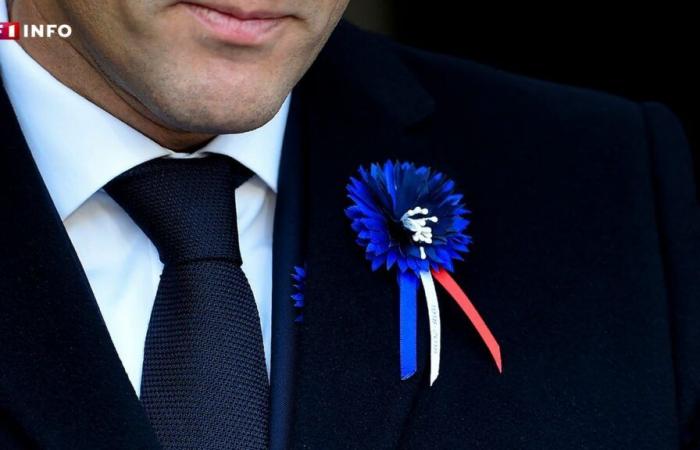The November 11 ceremonies commemorate the Armistice of the First World War and all the soldiers who died for France.
The French are invited to wear the Cornflower on their jacket, while the British wear the poppy.
These symbols celebrate peace and recall past battles.
Each country has its own badge. On the occasion of the commemorations of this Monday, November 11, personalities, such as the President of the Republic Emmanuel Macron, wear the Bleuet de France. British Prime Minister Keir Starmer, guest of honor this year, wears a poppy.
These two symbols highlight the commitment of France and the United Kingdom in the First World War and pay tribute to veterans.
Two nurses at the origin of Bleuet
Tradition rehabilitated in 2012, the Bleuet de France is a blue flower, sold by the National Office for Veterans and War Victims (new window)attached to the Ministry of the Armed Forces. The goal: to financially help injured soldiers, veterans, wards of the Nation, widows and widowers of soldiers or even victims of terrorist attacks. “This flower embodies the values of respect, peace and tolerance dear to the entire fighting community”the charity said today on its website.
Le Bleuet, surrounded by a blue, white and red circle, has its origins in the immediate post-war period when two nurses, Charlotte Malleterre, daughter of the commander of the Hôtel national des Invalides, and Suzanne Leenhardt led a workshop for nurses. soldiers hospitalized. They then made fabric flowers to allow these injured people to practice manual activity and sell them in the street.
This creation has become a symbol but its initial meaning ultimately remains quite vague. Some historians recall that cornflowers designated the youngest recruits in the trenches. The blue color could also have been chosen in reference to the French flag.
If its history takes it back to November 11, the Cornflower is also worn for other ceremonies, such as May 8 or July 14.
Poppies in the fields of northern France
Across the Channel, it's the poppy (poppy in English) which stood out as a flower of remembrance on the officials' buttonholes. In the battlefields of northern France, British soldiers saw hundreds of poppies growing during the war. Because of the bombings, they quickly disappeared. This flower therefore embodied the hope of the soldiers, hoping for the end of the fighting.
The “poppy” is notably mentioned in 1915 in the poem “In Flanders' Fields” by the Canadian John McCrae: “In the fields of Flanders the poppies blow / Between the crosses, row by row“. This emblem is therefore also very popular in all Commonwealth countries.
-
Read also
LIVE – November 11: Emmanuel Macron and Keir Starmer rekindled the flame of the Unknown Soldier
The French Veterans' Office and the Royal British Legion have each launched an appeal for donations in the run-up to November 11. Any citizen who wishes is called upon to participate to finance memory projects.






